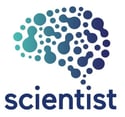Join Mark Musen (Stanford), Janice Kranz and Stephan Schürer (University of Miami) for CDD’s Q3 Town Hall Webinar, "Human vs. Machine-Enhanced Scientific Discovery"

We’re seeing ‘Big Data’ everywhere: healthcare, business, sports, traffic control, biology, drug discovery. The ‘behind-the-scenes’ tool enabling the power of Big Data - searching, sharing, visualizing, querying, analyzing - is the Semantic Web (aka ‘Web 3.0’)[1]. The major advancement brought about by the Semantic Web is the treatment of data and metadata on the internet as one giant graph of knowledge. Instead of the disjointed islands of knowledge we are used to, with the Semantic Web, databases will be more naturally connected to one other (except where privacy prevents openness).
None of us like to reinvent the wheel. All of us like discovering how our work connects with that of others - that’s the foundation of the scientific method, to build on others’ results. Applying semantic web metadata allows one’s work to be included in this broader arena - whether by (a) directly depositing results into a repository such as PubChem, (b) including metadata in a publication (which is becoming increasingly common, if not required by some journals), or (c) incorporating it into data stored within one’s organization so your data won’t be lost and internal colleagues (current and future) can find and use it. The Semantic Web is here, it’s expanding, and so we better all learn more about it so we don’t get left behind!
CDD is developing a tool (BioAssay Express) to easily assign semantic annotations to assays. To encourage and enlighten scientists on the growing adoption of Semantic Web annotation, we are sponsoring this Town Hall Webinar to address such questions as:
- What can ontologies do that controlled vocabularies can’t?
- What exactly are these various Semantic Web components of projects like NIH’s ‘Illuminating the Druggable Genome’ (IDG), ‘Big Data to Knowledge’ (BD2K), and ‘Library of Integrated Network-based Cellular Signatures’ (LINCS)?
- Why should I care if I’m just working on ‘small data’ (i.e., my own small set of experiments)?
- Do I need to be a data scientist to integrate Semantic Web properties into my data or reports?
- As the amount of public (and semantically annotated) scientific data grows, how will scientific work become easier, harder, or just different?
[1] a term coined by Tim Berners-Lee in a Scientific American article (http://www.scientificamerican.com/article/the-semantic-web/ )in 2001 to describe a web of data that can be processed by machines.
Register Now for this Human vs. Machine-Enhanced Scientific Discovery Webinar!
Date:
- Wednesday, September 21, 2016
- 10:00 AM (US Pacific), 1:00 PM (US Eastern), 6:00 PM (GMT)
Speakers:



- Mark Musen, Professor of Biomedical Informatics and of Biomedical Data Science, Director of Biomedical Informatics Research - Stanford University
- Janice Kranz, Consultant, CDD Advocate
- Stephan Schürer, Associate Professor in the Department of Pharmacology and Director of Drug Discovery at the Center for Computational Science - University of Miami
Join our distinguished panel of speakers as they deviate from the expected “PowerPoint presentation” style webinar to provide an engaging Town Hall experience.
Register Now to reserve your attendee slot!
Big thanks to our sponsors!
also thanks to the Research Data Alliance.
This blog is authored by members of the CDD Vault community. CDD Vault is a hosted drug discovery informatics platform that securely manages both private and external biological and chemical data. It provides core functionality including chemical registration, structure activity relationship, chemical inventory, and electronic lab notebook capabilities!
CDD Vault: Drug Discovery Informatics your whole project team will embrace!






